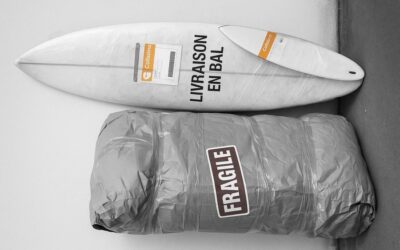France is the world leader in wine exports with a turnover of 8.7 billion euros for the 2020 cuvée.
With very particular success on the US market, particularly for rosé, the United States remains the leading export country, followed by the United Kingdom and Germany. In Asia, red wine is very popular to the detriment of white wine and rosé.
We invite our wine producers, our winegrowers, our wine merchants to carry out a preliminary study of the wines favored and consumed by wine lovers at their destination. In this article we will give you our advice on the regulations and legal obligations for exporting your wines. safely in all circumstances and to all destinations.
Our tips for shipping wine
Shipping wine from the vineyard to its place of consumption requires a lot of attention. Cylinders and their contents must be properly packaged and packaged for transport.
Qu’il s’agisse de vin de consommation rapide ou de grands crus de garde appelés « À mûrir en bouteille » ces recommandations sont très importantes.
Instructions on the packaging
The bottles must be placed in a sturdy cardboard packaging specially designed for wine bottles and certified by the carriers.
The size of the box must correspond to the number of bottles contained. To send 1 bottle of wine, you should opt for the individual box. There are many formats of wine boxes: boxes reserved for 1, 3, 6, 9, or 12 bottles.
Sending wine with unsuitable packaging means exposing yourself to a high risk of damage, breakage, and refusal to take charge of your shipment by the carrier.
Also remember to protect the bottle(s) with corrugated cardboard sleeves.
The 2 types of packaging recommended for shipping wine
- Polystyrene inner packaging with corrugated cardboard outer packaging
For inner packaging, opt for molded polystyrene bottle holders. These protect wine bottles of any size. Place this content in a corrugated cardboard box with adhesive flaps
- Inner packaging in molded cellulose cardboard or die-cut corrugated cardboard with outer packaging in corrugated cardboard.
Molded cellulose inner packaging is previously tested by laboratories to meet ISTA and carrier (UPS) standards. The size of these packages must be adapted to fit perfectly into the cardboard box.
- Recommended packaging for shipping wine
DHL Express offers you on their website a packaging from 1 to 6 bottles.Previously tested to ensure maximum reliability and impact resistance, the packaging is recyclable. They are made up of: an outer packaging to protect your shipments as much as possible and an insert to stabilize and secure your bottles.
- The influence of the position of the bottles during transport
The wine boxes are specially designed to place the bottles in an upright position with the cork in the upward position so that the transport is carried out in the best conditions.
During a transport of several hours, movements of acceleration, braking, cornering, ascent or descent, the wine is agitated. In a vertical position, the movement of the liquid (flow and reflux) better absorbs all these hazards.
If you are exporting grands crus in a wooden crate, it is also strongly recommended to place the wooden crate in a suitable box and to position the bottles in an upright position.
The influence of temperature during transport
The temperature difference between the producer's cellar (12°C) and a few hours of transport (25°C) may cause the liquid to expand. If the wines are placed in an upright position, only the air space between the wine and the cork will decrease and there will therefore be no risk of the liquid leaking out.
Tips for stabilizing a wine weakened by transport
These are tips you can give your customers if the wine has been shaken during transport. They can let the wine rest between 5 and 10 days in the cellar so that it can stabilize.
If your customers want to taste their new nectar quickly, they can place the bottles in a dedicated wine cellar for 1 to 3 hours at a temperature between 4 and 8 degrees. However, we advise them for an optimal tasting to wait a few days.
Wine export conditions
Exporting Wine to the European Union
Alcohol whose wine can be dispatched nationally and within the European Union to professionals and consumers provided that the restrictive duties are paid in the Member State or under suspension of excise duties (at except Finland and Sweden)
They should be stored in containers with a maximum capacity of 5 liters. carriers, do not accept alcoholic beverages with an alcohol content greater than 70%.
Export outside the European Union
If you export wine internationally outside of the European Union (including overseas departments) you do not have to pay the restrictive duties and the wine will be invoiced duty free.
The Electronic Administrative Document (DAE) must be provided for export in order to cover the transport of the wine to the French or European customs office where the export customs declaration will be issued.
Useful if you ship your wines to fairs and shows
If you do not have this status, you must pay these taxes to the competent authorities and provide a DSA document for the shipment. Finally, you will be reimbursed after the fair on products that have not been sold.
Even today when it comes to wine, the impact on health and the environment is increasingly important. The consumer is becoming more and more sensitive to organic wine and this trend is generalizing both for the national and international market.
Spain and Italy have already taken the lead in organic wines and currently they are the main producing countries in the world.
Knowing that organic wine requires more optimal conservation, it is also important to ship it in very good conditions. The increase in organic wine consumption could reach 30 million cases by the end of 2022, but for now it is a niche market.
My Flying Box offers many transport solutions negotiated with the best carriers to help you quickly deliver your wine orders in France and everywhere throughout the world. My Flying Box also has many tools to automate and simplify your shipping process with suitable modules or connectors.
Finally My Flying Box provides you with a team of experts to support you on all topics related to transport, customs, packaging, insurance, e-commerce or export in turnkey workshops to be booked online.
For more information on export and packaging conditions please download our e-book on our recommendations for your wine and liquor shipments.



